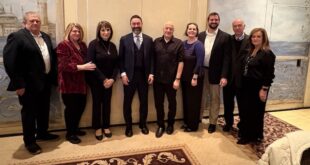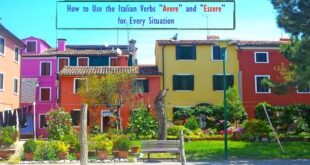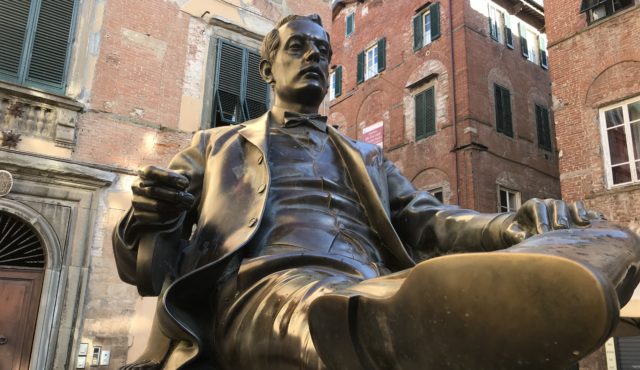
One of history’s most revered operatic composers, Giacomo Puccini presence is felt throughout his hometown of Lucca.
In a country that is as synonymous with music as Italy, it takes supreme self-confidence to bill yourself as the city “where music feels at home.” Yet the city that lays claim to this title is not bel canto Naples nor operatic Milan but little Lucca — a jewel of a Tuscan town of 90,000 that was home to legendary composer Giacomo Puccini, the creator of such world famous works as “La Bohème,” “Madame Butterfly” and “Tosca.”
So revered is Puccini in Lucca that on a recent visit there even the packets of sugar at my hotel bore his image. With shades of “George Washington slept here,” one finds a piano seemingly everywhere in Lucca and environs that elicits proud comments from locals that “Puccini composed here.”
Despite his international acclaim, Puccini never strayed long from his native Lucca, and with good reason. The city is as charming today as it was nearly a century ago when he strolled atop its pristine walls, which remain the city’s most notable feature.
While the walls may not have changed, the music has certainly evolved. Lucca is now home to a very prominent annual outdoor summer music festival that has seen the likes of David Bowie and Bob Dylan grace its stages. No less than the Rolling Stones played a concert in Lucca last year. Yet the city and surrounding countryside remains “the land of Puccini” for locals as well as the countless tourists who flock to Lucca each year to hear the music of “the maestro” at a number of venues devoted to his operas.
As the 20th century dawned, Giacomo Puccini was in the vanguard of those musical figures who could truly be considered “world famous.” He crafted his operas to appeal to listeners beyond the borders of Europe. “La Fanciulla del West,” for example, was set in California and had its premiere at New York City’s Metropolitan Opera. “Madame Butterfly” on the other hand was set in Japan and played in opera halls as far afield as Sydney, Australia.
Perhaps adding to his global appeal, Puccini’s own life read like one of his operas, complete with affairs, mistresses, “honor killings,” children out of wedlock and suicides. Had he lived today, his life no doubt would have been fodder for countless supermarket tabloids.
Puccini’s unconventional personal life was coupled with a very modern approach to making money. He understood the value of autographs and once parlayed a signed manuscript page from “La Bohème” into a $3,000 motorboat. He was also among the first to reap the financial rewards of product placement and rarely appeared without sporting the Borsalino hat that the company paid him to wear.
Puccini’s death from throat cancer in 1924 was a cause for national mourning in Italy, but in Lucca his spirit, his music and his name certainly endure … seemingly everywhere. Today, his birth home in Lucca is a museum dedicated to his life, and the lovely little square outside the home, Piazza Cittadella, features a bronze statue of the composer and serves as the venue for a series of Puccini-themed summer concerts.
A much grander venue for Puccini summer concerts is the outdoor theater at Torre del Lago Puccini, the town on picturesque lake Massaciuccoli 11 miles from Lucca, where Puccini built a villa and resided for much of his life. Much like the mountain hamlet of Puccini’s forefathers, Celle di Puccini, Torre del Lago had the Puccini name joined to it in a tribute to the composer subsequent to his death. Here, the 3200-seat theater stages Puccini operas in each July and August.
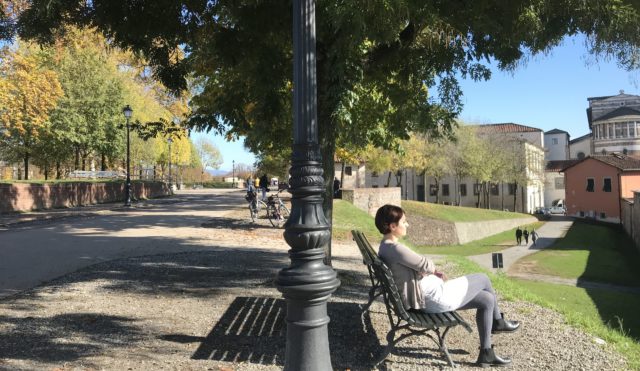
With cafes, restaurants, hotels, streets and indeed whole towns named to celebrate Puccini, it is ironic that Lucca’s conservatory of music is one local venue that isn’t named for him. That honor, a sort of consolation prize, goes to another notable musician from Lucca, the classical era composer and cellist Giuseppe Boccherini, who is most famous for his “Celebrated Minuet” which is inevitably played around the world anytime a sting ensemble wants to strike an elegant and highbrow note.
Other musicians hailing from Lucca include the Baroque composer Francesco Geminiani, renown for publishing “The Art of Playing on the Violin” in 1751, and the operatic composer Alfredo Catalani, a contemporary of Puccini. The famed conductor Arturo Toscanini was so impressed with the music of Catalani that he named one of his daughters, Wally, after Catalani’s most popular opera “La Wally.”
The answer to why Lucca has spawned so many noteworthy composers and musicians can be found in economics and geography. Strategically located on one of the main routes between Milan and Rome, the city grew rich in the silk trades beginning in the 11th century. With that wealth, the citizenry of Lucca could afford to patronize the arts and to build numerous fine churches that in turn produced a need for many musicians. Puccini’s forefathers, for example, included four generations of musicians who held the title of maestro di cappella of the Cathedral of San Martino in Lucca, and as such all composed music for the church.
In addition to churches, the city fathers built many fine palazzos like the Palazzo Mansi, which is now a stunning national museum, and several hundred notable villas in the surrounding countryside, including the opulent Villa Torrigiani and the so called “Villa Reale,” which is set in a magnificent botanical park of 40 acres.
But the most captivating aspect of Lucca is undoubtedly those magnificent renaissance walls and ramparts that completely encircle the city’s historic center and were built over a span of more than a century to protect the town’s citizenry. In the decades following the walls’ completion in 1650, it became apparent that they would not be needed for military purposes. The wide ramparts were therefore transformed into more than 4 kilometers of elevated parks with a variety of trees, thus setting the stage for the Lucchesi to enjoy the quintessentially Italian custom of the passeggiata, or evening stroll, or the equally Italian pleasure of cycling. So enamored are the Lucchesi with their walls that there is a tradition to sponsor a new tree planting on the walls each time a local child is born.
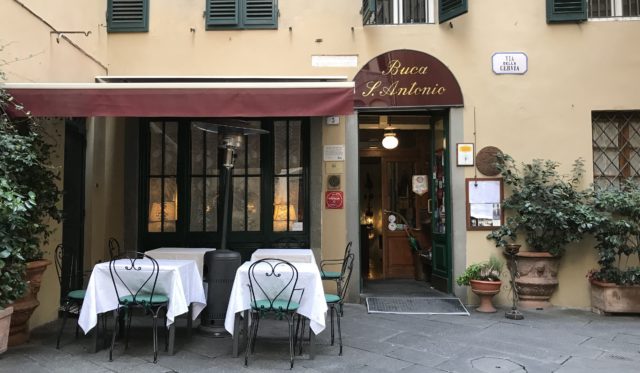
The Lucchesi are indeed attached to many traditions, with the result that some of the old haunts that Puccini frequented can still be enjoyed today, like the Buca di Sant’Antonio restaurant, with its famous copper kettles hanging from the ceiling. The restaurant still serves up bowls of the farro soup that was a favorite of the composer.
As attached as the Lucchesi are to their city, many of the farming families who hailed from the surrounding countryside sought brighter futures outside of Italy beginning in the 1860s. As such, chapters of the Lucchesi nel mondo (Lucchesi in the world) are now found in 20 North American cities and more than two dozen South American cities.
The reputation of the Lucchesi as intrepid and prolific immigrants who were adept at creating statuary is known throughout Italy. There is an old joke there that goes, when Columbus landed in the new world, he discovered that the Lucchesi were already there selling plaster statues. Believe that if you will, but one thing is certain: Wherever the Lucchesi wandered in this wide world of ours in the last century, they carried in their hearts the music of Giacomo Puccini … the best-loved son of their native land.
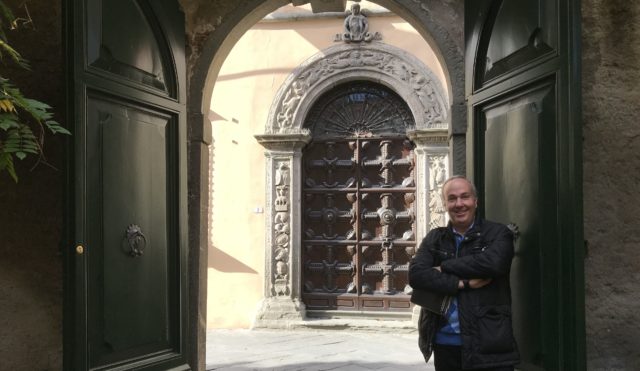
The above appeared in the March issue of the print version of Fra Noi. Our gorgeous, monthly magazine contains a veritable feast of news and views, profiles and features, entertainment and culture. To subscribe, click here.
 Fra Noi Embrace Your Inner Italian
Fra Noi Embrace Your Inner Italian


